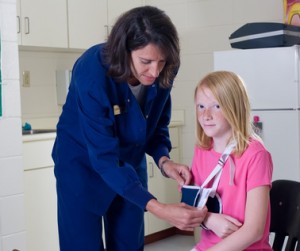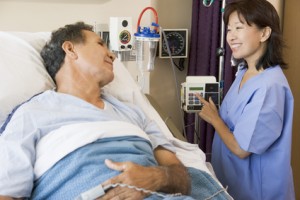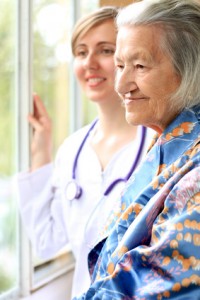Five years ago, philanthropist Betty Irene Moore donated $100 million to the University of California – Davis, moving the School of Nursing from dream to reality. This week, the first group of nurses will graduate from the program.
25 students who were recruited for their talent and whose education was fully funded by scholarships will be graduating. The hope is that they represent a new breed of well-educated nurses who will transform the health care system.
In this article in the Sacramento Bee, the School of Nursing Dean Heather Young said, “Our goals and priorities are to improve the health care system and advance the health of our communities. We realize that nurses can, and should be, the catalysts of change.”
Young called this year’s class of graduating nurses “just a beginning.” Already another 25 students are queued up for the next two years, with more than 30 percent of them coming from underrepresented ethnic communities. The school also enrolls doctoral students in a four-year program.
In a seminal 2010 report on the future of nursing, the Institute of Medicine concluded that health care reform meant “nursing education must be fundamentally improved both before and after nurses receive their licenses.”
With the population growing older and chronic diseases taking center stage, the IOM report, which Young endorses, determined that “nurses should achieve higher levels of education and training through an improved education system that promotes seamless academic progression.”
Young said she was drawn to the position of dean because she, too, was inspired by the vision of Betty Moore.
The story of how Moore decided to commit $100 million over 11 years to a new school of nursing is a tale of personal belief in change.
Moore had been in a hospital and experienced a medication error. A nurse had insisted she take a shot, but Moore objected. The nurse gave her the shot anyway.
It turned out the shot of insulin was meant for a neighboring patient and potentially put the health of both patients at risk.
Says nurse Johnston, “What impresses me most is that Betty Irene Moore, a person with a lot of money, didn’t go blaming the individual or the system, she did the opposite. She decided she could do something positive about the problem of medical errors, make change for the better and build a better nurse.”
Specifically, Johnston’s job, which he says is a project of the Gordon and Betty Moore Foundation, is to be an educator, a monitor and a resource to prevent patients from getting hospital-acquired infections from improper use of ventilators, intravenous tubes, catheters and the like.
In the status-quo health care system, such infections have come to be seen as somewhat of a statistical inevitability – even to the point where patients’ rights groups routinely tracked and reported their occurrence in various hospitals.
“The culture and belief that infections are a part of a hospital stay needs to change,” Johnston said.
In an interview at the UC Medical Center where he works, Johnston said his job is called “nurse champion.”
He works as part of a collaborative system for higher quality by advising and teaching medical staff on ways to curb hospital infections.
It’s a challenging and new role for Johnston, who’s worked as a nurse for 5 1/2 years.
“We are colleagues with physicians and nurses and aides,” he said. “We are change agents in the system.”
To be sure, Johnston’s gotten some push back already in his new job in the UC Davis Medical Center’s burn unit. But he’s prepared to tap into the communication and leadership skills he’s learned to overcome the skepticism.
“I was seen as an outsider, someone to audit them and get them in trouble,” Johnston said of his colleagues. “There was some question of my credibility and credentials both from nurses and the physician side. It’s a challenge. It takes time to get that buy-in.”










